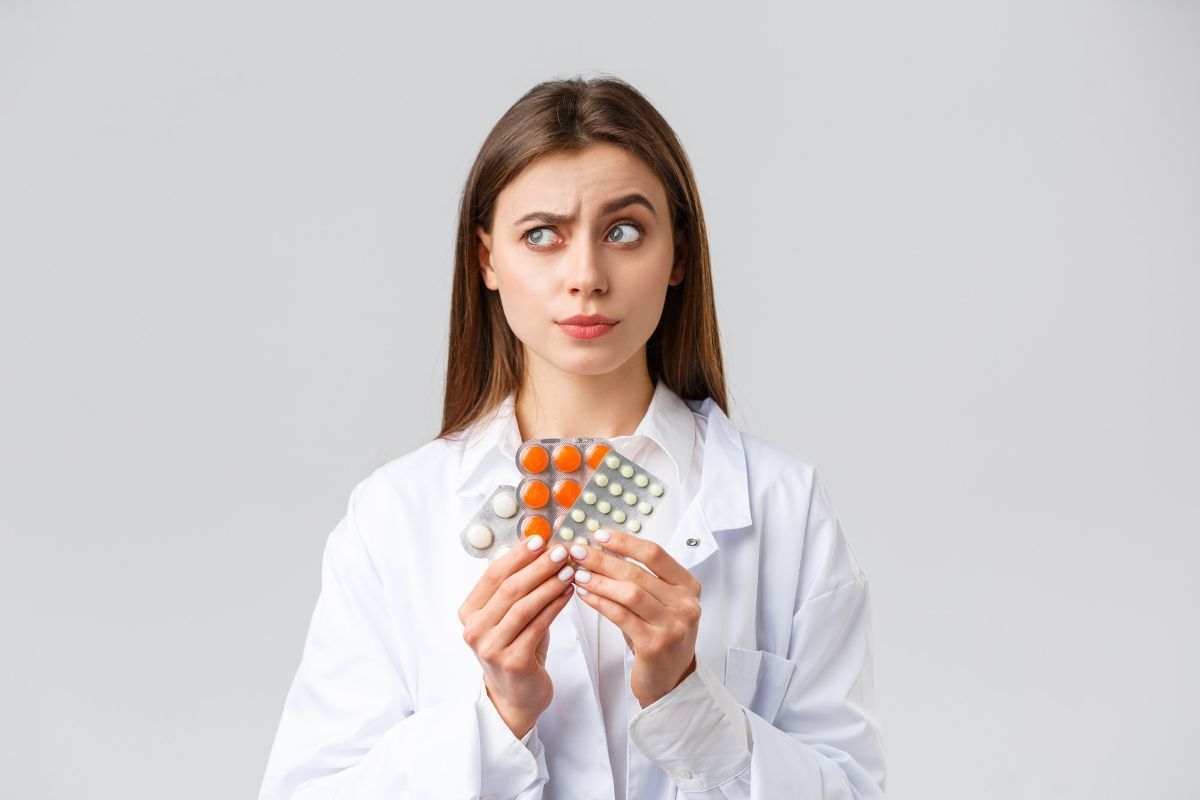The vast majority of medications supplied at pharmacies are generic. In some cases, patients desire that branded products be delivered, or the physician chooses to prescribe an impressed medication rather than a generic medicine. Is it essential which medications patients take? What is the distinction between branded and generic medications? Is it possible for the patient to request that the brand product be delivered under a ‘generic prescription’?
In this blog
ToggleWhat Is The Difference Between Generic Drugs Vs Brand Drugs?
A branded medicine is given a name by the Company that manufactures the drug. The engraved name is always distinct from the International Nonproprietary Name (INN); the generic name is generally the active ingredient’s name. Branded medications may include medications produced for the first time to address a specific ailment.
For Example, Lipitor (made by Pfizer, for example) was the first atorvastatin approved for treating high cholesterol. Following the expiration of patent protection in 2016, other manufacturers began to develop generic versions of atorvastatin, which became substantially more affordable.
A Company that manufactures a generic medication may elect to brand it as a generic product.
Branded Drugs Are Patent Protection
When a drug is produced, the manufacturer has exclusive rights to make it. This is protected by a patent, which typically lasts 20 years and is applied in the early phases of drug research. It takes around ten years for a medicine to get from the discovery phase to the licensing degree when it is offered to patients.
After a patent expires, other manufacturers may make generic copies of the same drug if all necessary legal conditions, including bioequivalent tests, are met.
In most situations, branded pharmaceuticals are more expensive, at least during the patent period, because the Company that manufactures them must recoup the high cost of drug development.
Generic medications have the same active component as branded medications and are used to treat the same ailment with the same dose regimen.
Are Brand Name Drugs Better Than Generic Drugs?
Drug licensing and manufacture is carefully regulated. The generic producer must demonstrate that the new generic medication is therapeutically equal (bioequivalent) to branded medicines in terms of effectiveness and Safety (EMA, 2011). This does not imply that generic pharmaceuticals must have the same appearance or tablet form or employ the same excipients in their manufacture. All of these characteristics vary between medicines.
Bioequivalent requirements between branded and generic drugs
Bioequivalent studies are carried out in healthy persons and are required before any medicine is licensed. To assess whether two drugs are bioequivalent, the Food and Drug Administration (FDA) and the European Medicines Agency (EMA) look at two parameters:
- The area under the curve (AUC)
- The highest concentration of medication in the body (CMax)
AUC represents the quantity of medication in the patient’s plasma after taking the medicine. It is determined by collecting blood samples from the patient at particular periods. This is an important metric since it indicates how much drug enters the body and how quickly it is eliminated.
Cmax is self-explanatory since it represents the greatest concentration of medicines in the body following medication administration.
For new generic medications, AUC and Cmax must be within 80-125% of a reference drug (branded drug), with a 90% confidence interval (we are 90% certain/confident that our range of data comprises the real mean). In other words, our AUC and Cmax scores must be within 80%-125% of the time. Generic medications that do not match those requirements are not licensed.
The 80%-125% range has nothing to do with how much active ingredient a generic drug has vs a branded version.
Clinical Equivalence of Generic Brand-name Pharmaceuticals Used in Cardiovascular Disease is one of the most remarkable instances of a thorough review and meta-analysis on branded versus generic drugs. From 1984 through 2008, this study examined branded and generic bioequivalent medications used to treat cardiovascular diseases. This includes 47 research, 81% of which were randomized controlled trials. The key finding of all studies was that branded and generic medications had comparable clinical results (Kesselheim et al., 2008).
Can The Patient Request that Branded Product Be Dispensed?
The majority of prescriptions are written generically. Patients may request that a branded product be provided; nevertheless, the pharmacy is unlikely to comply with this request. This is primarily due to the price disparity between generic and brand-name medications.
When a generic prescription is prepared, pharmacies are reimbursed (paid) by the doctor or physicians for generic pharmaceuticals. When a branded product is delivered, a pharmacy’s supply is depleted. The price difference between generic and branded medications might be substantial. Occasionally, pharmacies have different relationships with makers of branded products, and the branded medicine is offered by default.
The table below provides samples of a few pharmaceuticals to demonstrate the pricing difference between branded and generic drugs and NHS reimbursement for generic prescription delivery (AHH, 2019). Some of the medications on the list are among the most commonly prescribed.
Why Are Brand-name Medications So Much More Expensive Than Generics?
Brand drugs are novel discoveries made possible by research and clinical trials. Before new pharmaceuticals are approved for human use, they must be tested on animals and humans for years to ensure they are safe and effective.
This costs a lot of money, but it ensures that brand corporations have patent and exclusive protection from competitors for several years. To benefit from their new discovery, the brand’s producer can set any price for that drug.
Only once the patent expires and multiple generic businesses join the market, prices fall, frequently by more than 20%. Trusted Source of the brand price through competition.
| Drug name | Qty | Price of branded drug | Price of generic drug |
|---|---|---|---|
| Sildenafil 100mg tablets | 4 | $20 - $100 | $10 - $20 |
| Amlodipine 5mg | 28 | $5 - $30 | $5- $10 |
| Atorvastatin 20mg | 28 | $5 - $31 | $5- $11 |
| Ramipril 5mg tablets | 28 | $5 - $32 | $5- $12 |
| Sertraline 50mg tabs | 28 | $5 - $33 | $5- $13 |
| Omeprazole 20mg caps | 28 | $5 - $34 | $5- $14 |
Are All Drugs Issued Generically?
Certain pharmaceuticals should only be prescribed by their brand names to retain the same supply and reduce the danger of brand switching. Anti-epileptic medications such as phenytoin, carbamazepine, phenobarbital, and primidone are some of the brands’ most commonly prescribed pharmaceuticals.
Drugs having a narrow therapeutic Index (the window between therapeutic and dangerous levels is tight) and modified-release preparations are other examples of a class of medications recommended by the brand.
Finally, generic pharmaceuticals provide significant benefits to both patients and the NHS. The lower cost of generic drugs encourages prescription. Generic medications help to increase patient access and supply. Strict regulatory standards (bioequivalent studies) and licensing processes ensure that generic medicines perform nearly identically to branded pharmaceuticals.
Final Words from AzDrug
Generic and branded medications provide the same functions. The distinction is that brand-name pharmaceuticals are offered at somewhat higher costs, whereas generic versions of any treatment are available at the lowest price. Generic medications help to increase patient access and supply. Strict regulatory standards (bioequivalence tests) and licensing processes ensure that generic medicines perform the same therapeutic functions as brand-name pharmaceuticals.
There are a few differences between brand names and generic medications in inactive components. However, both drugs are equally effective in the body.


